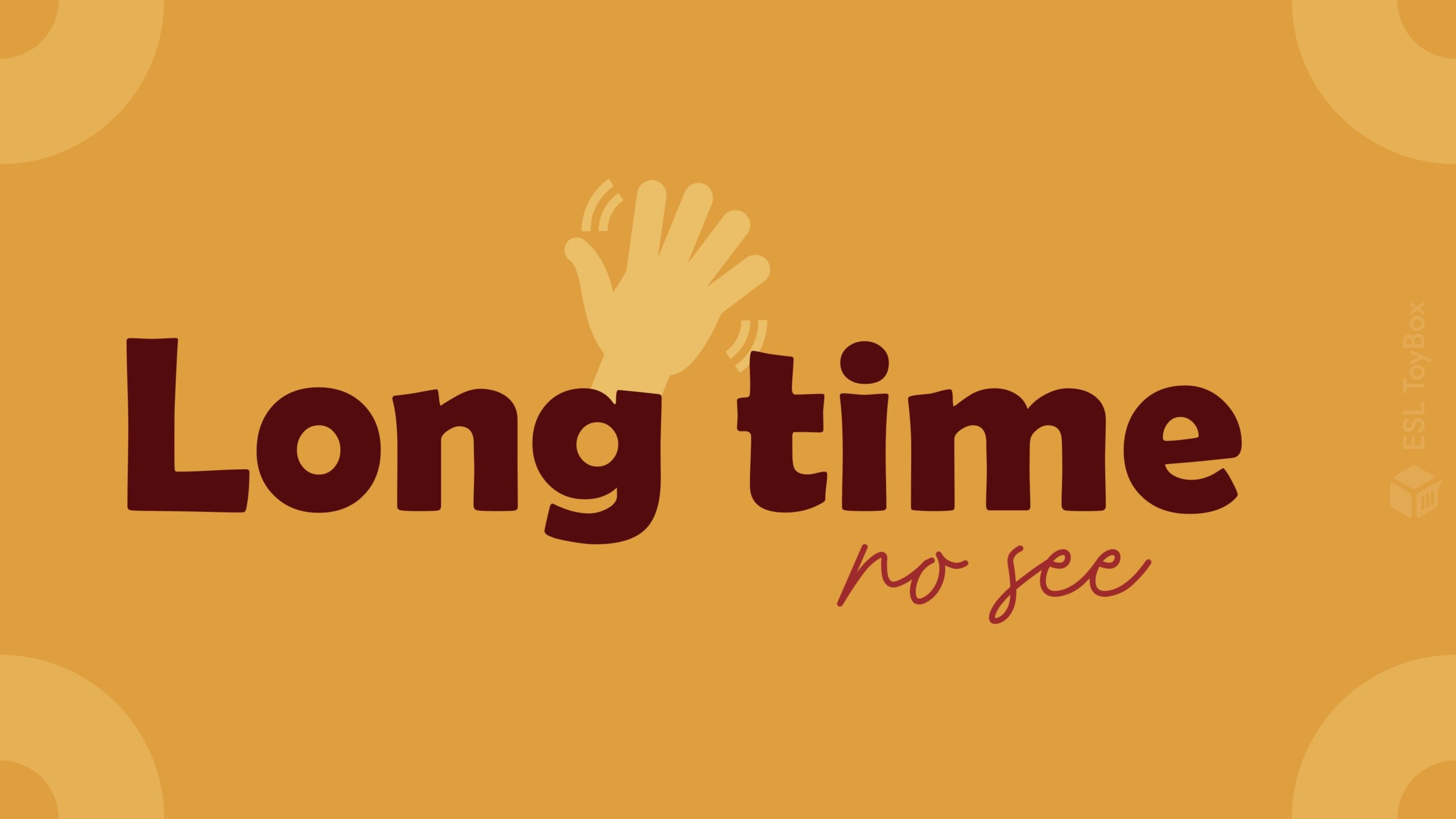Long time, no see.
Hello. Long time, no see. I haven’t posted an English phrase of the day in a while. I really don’t have a good excuse. I just didn’t feel like it. But, I guess that is the luxury of doing something as a hobby, you never feel obligated to do it. I wasn’t even that busy over the last few weeks. I was teaching, but I had prepared my lessons in advance, so there wasn’t much to do. That might be the reason why I didn’t feel like posting too. When I am busy, I tend to be more productive in my personal life as well. Vacations and slow time makes me lazy. I think that when I am busy, I am in work mode. Now, I am in vacation mode. I think that I haven’t had more than a week without classes since last March. This year should be a little less busy until autumn. I can’t promise that I’ll be posting a lot during this down time, but hopefully I feel up for it from time to time.
Meaning
Most people are familiar with the phrase, “Long time, no see.” It is an old greeting reserved for someone you haven’t seen in a while. It can also be used ironically to say hello to someone you saw very recently. The poor grammar is indicative of broken English which may give you a clue about the origin. I should also mention that the phrase can be written without the comma after ‘time’ as well.
Example: Hello. Long time, no see. I heard you got married and had a baby since the last time we met.
Native American
Long time, no see first appears in print in the early 1900s and late 1800s. It appears in Western novels where cowboys run into Native Americans. The phrase is used to illustrate the Natives’ perceived poor English skills. To me, it feels like a vaguely racist portrayal, but I can’t understand the effect the authors were going for. Lending credibility to this origin is the 1894 quote found in The Boston Daily Globe: “Come to my teepee. Long time no see. Plenty game in mountains. We kill deer and bear.”
Mandarin Chinese
Another origin suggests that today’s phrase is a direct translation of a Mandarin Chinese saying, “hǎo jǐu bú jiàn.” The belief is that British sailors brought it back to England in the early 1900s after encountering pidgin English speakers there. Long time, no see has been called racist towards Asians because it might be making fun of their broken English. However, it is a direct translation of Mandarin syntax, so the accusations are up for debate.
Imitators
Long time, no see may have come from pidgin English spoken by Native Americans or Chinese, or native English speakers imitating those people. It first appears in Oxford English Dictionary in 1901 and is fixed in English. That means it is accepted as a phrase despite it being ungrammatical. It is a common phrase. Wordhistories.net found “long time not see” in an 1892 short story called, Lee Hing’s Girl. In the story, Mamie speaks to a Chinese person using this phrase. The author goes out of their way to point out that Mamie is using pidgin English.
I hear this phrase a lot in Korea and it seems there was even a Korean movie made of the same name in 2017. Have you watched it? Is the film any good?
For more English phrases and quotes, follow me on Facebook:
https://www.facebook.com/ESL-ToyBox-112152010890485
Reference:
https://www.npr.org/sections/codeswitch/2014/03/09/288300303/who-first-said-long-time-no-see-and-in-which-language#:~:text=The%20first%20time%20%22long%20time,Drannan.
https://en.wikipedia.org/wiki/Long_time_no_see
https://esllibrary.com/blog/is-long-time-no-see-offensive
https://wordhistories.net/2018/01/21/long-time-no-see/
https://www.nationalreview.com/2018/11/university-claims-long-time-no-see-expression-derogatory-to-asians/
https://www.babbel.com/en/magazine/common-racist-words-phrases


